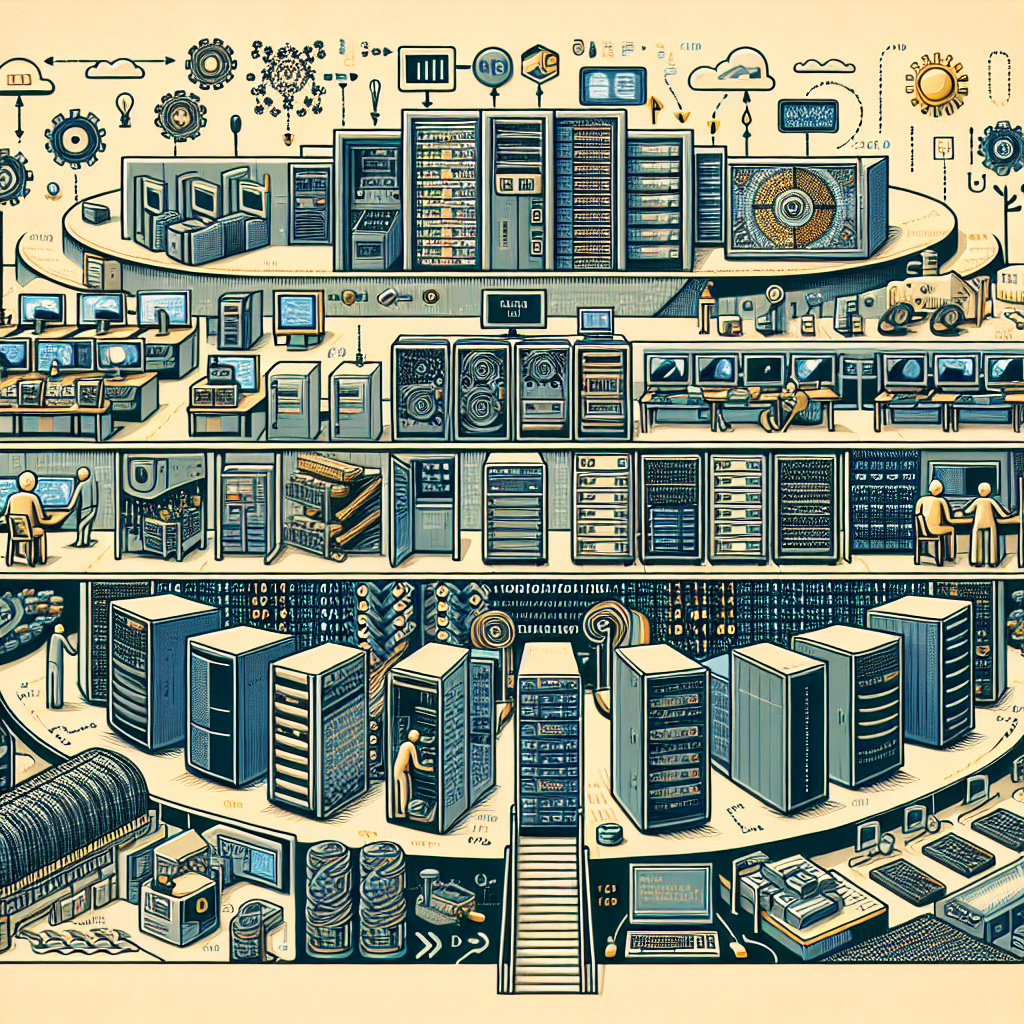Your cart is currently empty!
The Evolution of Data Center Database Technologies

Data centers have come a long way in terms of database technologies over the years. From the early days of mainframe computers to the modern era of cloud computing, the evolution of data center database technologies has been nothing short of revolutionary.
In the early days of computing, data centers relied on mainframe computers to store and manage their data. These mainframes were large, expensive machines that required a dedicated team of IT professionals to operate. The databases used on these mainframes were typically hierarchical or network databases, which organized data in a rigid structure that made it difficult to access and manipulate.
As technology advanced, relational databases were introduced to the market. Relational databases allowed data to be stored in tables that could be linked together using common fields, making it easier to query and analyze large amounts of data. This innovation revolutionized the way data centers managed their information, leading to increased efficiency and productivity.
In the 1990s, the rise of the internet led to the development of new database technologies such as NoSQL databases. These databases were designed to handle large volumes of unstructured data, making them ideal for web applications and other data-intensive workloads. NoSQL databases also offered greater scalability and flexibility than traditional relational databases, allowing data centers to easily scale their infrastructure to meet growing demands.
Today, data centers are moving towards cloud-based database technologies, such as Amazon Web Services (AWS) and Microsoft Azure. These cloud platforms offer a wide range of database services, including relational databases, NoSQL databases, and data warehousing solutions. By leveraging the power of the cloud, data centers can quickly provision and scale their database infrastructure without the need for costly hardware investments.
Looking ahead, the evolution of data center database technologies shows no signs of slowing down. As the volume of data continues to grow exponentially, data centers will need to adopt new technologies such as machine learning and artificial intelligence to extract valuable insights from their data. By staying at the forefront of these advancements, data centers can continue to drive innovation and unlock new possibilities for their businesses.
In conclusion, the evolution of data center database technologies has transformed the way organizations store, manage, and analyze their data. From mainframes to cloud computing, each new advancement has brought greater efficiency, scalability, and flexibility to data center operations. By embracing these technologies, data centers can stay ahead of the curve and remain competitive in today’s data-driven world.

Leave a Reply